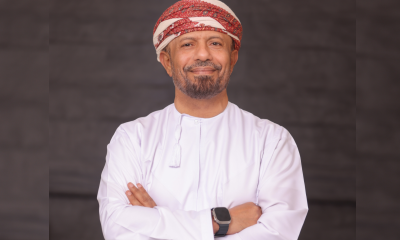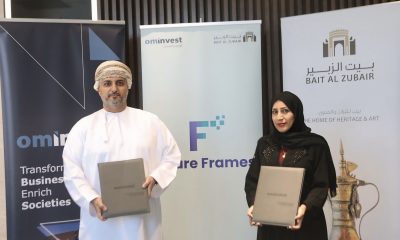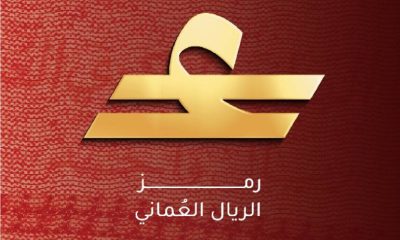Banking & Finance
‘Banking sector in Oman has put up a strong performance in 2015’
The OER-GBCM Best Banks in Oman survey 2015 reflects the banking sector’s resilient performance against the backdrop of a challenging macro-economic environment

The OER-GBCM Best Banks in Oman survey 2015 reflects the banking sector’s resilient performance against the backdrop of a challenging macro-economic environment.
The banking sector in Oman has put up a strong performance in financial year 2015. According to Central Bank of Oman estimates, the combined balance sheet of conventional and Islamic banks taken together registered an impressive growth of around 16 per cent in total assets. The total outstanding credit stood at RO20.1bn as at the end of December 2015, a rise of 12 per cent over the level witnessed a year ago. Total deposits also registered a significant growth of 8 per cent to RO19.4bn as at the end of December 2015. Liquidity conditions in the banking sector so far have continued to remain comfortable with no upward pressure seen with regard to rial Omani interest rates.
Islamic banking has grown apace since its introduction in December 2012. Within a short span, two full-fledged Islamic banks and Islamic windows of six local banks started operations by offering Islamic banking products. The availability of diverse banking services has helped in promoting financial inclusion and deepening, in the banking sector in Oman. Islamic banking entities provided financing to the extent of RO1.78bn as at the end of December 2015, compared to RO1bn a year ago. Total deposits held with Islamic banks and windows also registered a significant increase to RO1.54bn in December 2015 from RO0.7bn as at the end of December 2014. The total assets of Islamic banks and windows combined, amounted to RO2.3bn as at the end of December 2015 which constituted about 7.5 per cent of the banking system assets.
Breaking it down – Large banks
The individual performance of banks reflects this positive trend. BankDhofar recorded a remarkable growth in all key areas of business. Its net profit for the year 2015 was RO46.77mn showing a strong growth of 15.62 per cent year-on-year compared to RO40.45mn in 2014. BankDhofar’s Islamic banking window – Maisarah- too grew rapidly and boasts of total assets of nearly RO300mn as on December 31, 2015. Maisarah’s growth was largely driven by an excellent Islamic banking experience coupled with a wide range of products and services.
National Bank of Oman recorded a net profit of RO60.1mn – an increase of 20 per cent compared to the year before and the highest net profit recorded in the bank’s history. The bank’s total assets increased by 10 per cent in 2015; its loan, advances and financing activities increase by 9 per cent, while its net interest income and net income from Islamic financing grew by 16 per cent.
Bank Muscat posted a net profit of RO175.45mn in 2015 compared to RO163.23mn reported in 2014, an increase of 7.5 per cent. Net interest income from conventional banking and income from Islamic financing stood at RO260.51mn in 2015 compared to RO243.64mn in 2014, an increase of 6.9 per cent. Non-interest income at RO147.23mn was higher by 5.6 per cent compared to RO139.47mn for the year ended on December 31, 2014. The basic earnings per share were RO0.077 in 2015 as against RO0.071 in 2014. The banks’ capital adequacy ratio stood at 16.10 per cent as on December 31, 2015 after appropriation for proposed dividend for the year 2015 against the minimum required level of 12.625 per cent as per Basel III regulations issued by the Central Bank of Oman.
Mid-sized banks
Ahlibank continued its good run in 2015, with the highest net profit after tax of RO27mn. Its other key targets were also achieved with a return on equity of 13 per cent, cost efficiency ratio of 35 per cent and NPLs ratio of 1 per cent. Progress on SME business development continued, with the SME lending portfolio crossing 3 per cent of total loans. The bank’s Al-Hilal Islamic business too made a steady progress, contributing 25 per cent of the bank’s bottom line in 2015, with assets crossing RO250mn.
Oman Arab Bank’s financial performance in 2015 was robust. The bank delivered a healthy increase in revenue and superior balance sheet growth, while maintaining its asset quality. Its profits also grew in line with shareholders’ expectations, despite increased operating costs brought in by strategic investments in technology, branch network, and introducing innovative products and services to build sustainable business momentum.
Oman Arab bank’s Islamic banking window, Al Yusr, showed an exponential growth in deposits of 295 per cent. On the assets side, the Islamic financing receivables of Al Yusr more than doubled from RO21mn to RO50mn during 2015. Furthermore, Al Yusr expanded to a nationwide footprint of seven branches located in Muscat, Al Buraimi, Sohar, Ibra, Nizwa and Salalah.
Bank Sohar performed well in 2015, with only a marginal decline in profits, due to lower investment income and accounting for investment impairments. This performance has been achieved despite 2015 being a challenging year for all oil exporting countries. The bank’s core banking business grew as loans and fee-based business continued to rise, as did the number of ATMs, branches and satisfied customers. The bank completed a successful rights issue of equity, increasing the capital to RO144.1mn, and consolidating its position as the fourth largest bank in Oman in term of assets.
HSBC Bank Oman’s showed a 5.7 per cent increase in net profit of RO12.9mn for the year ended on December 31, 2015, compared to RO12.2mn for the year ended on December 31, 2014. Profit grew on the basis of an increase in net operating income before loan impairment charges and a reduction in operating expenses.
Challenges ahead
Despite the promising showing, the sector has its own set of challenges. Given low oil prices, the government could look to the banking sector to fund anticipated budget deficits in 2016 or 2017, although such a move would likely to tighten liquidity conditions in the market and drive up borrowing rates for the private sector. In the short term, at least, borrowing costs look set to remain at their present levels, after the CBO announced in mid-December 2015 that it had no plans to revise benchmark rates. The announcement came as many other central banks in the region raised key rates in the wake of the 25-basis-point increase by the US Federal Reserve earlier in the month.
According to a recent Moody’s Investors Service report, Oman’s banking system continues to remain vulnerable and the operating environment for banks is expected to weaken further due to low oil prices.
“The impact of low oil prices, on GCC banks’ standalone profiles has so far been most acute in terms of more challenging liquidity conditions, reflecting increasing government borrowings, reduced deposit inflows and rising interest rates”, says the Moody’s report. “We expect the operating environment for Oman’s banking system to weaken further as indicated by declining business volumes, investment, liquidity and reduced consumer confidence.” It goes on to say that reduced oil revenues for regional governments have already led to a more challenging funding environment for the GCC banks. While GCC banks’ asset quality performance and capital buffers have been broadly maintained so far, Moody’s noted that pressure on loan growth and asset quality could rise if GCC governments become more fiscally selective and let the non-oil economy slowdown further.
Overall, yearly deposit growth at banks in Oman has slowed to around 3 per cent, Moody’s said, adding: “But the government has consciously kept its level of deposits in the system stable at around 32 per cent to help maintain liquidity.” As a result, Moody’s said the loans-to-deposits ratio for Oman’s banking system has been broadly stable at 98 per cent.
The OER-GBCM ‘Best Banks in Oman’ survey 2015 takes an in-depth look at the Sultanate’s banks, their strengths, weaknesses and potential areas of growth.
-

 Leaders Speak2 months ago
Leaders Speak2 months agoDhofar International Development and Investment Company: Driving Sustainable Growth and Strategic Synergies in Oman’s Investment Landscape
-

 Economy1 month ago
Economy1 month agoMaal Card: What Oman’s New National Payment Card Means for Everyday Users
-

 Events2 months ago
Events2 months agoOER Corporate Excellence Awards 2025 Honours Entities and Innovations in Oman
-

 Arts and Culture2 months ago
Arts and Culture2 months agoOminvest and Bait Al Zubair Launch “Future Frames” to Empower Youth through Art and AI
-

 News1 month ago
News1 month agoSheikh Suhail Bahwan, Chairman of Suhail Bahwan Group, Passes Away
-

 News2 months ago
News2 months agoMs. Noor Saldin, Founder of Modern Generation International School, Wins Woman of the Year 2025; School Honored for Empowering Future Female Leaders
-

 Economy1 month ago
Economy1 month agoOman Unveils Official Omani Rial Symbol in Landmark Move to Boost Global Currency Presence
-

 News4 weeks ago
News4 weeks agoOIG Appoints New CEO to Lead Its Next Chapter of Excellence






























You must be logged in to post a comment Login